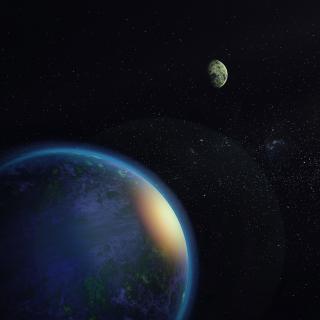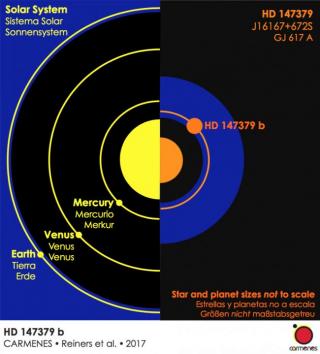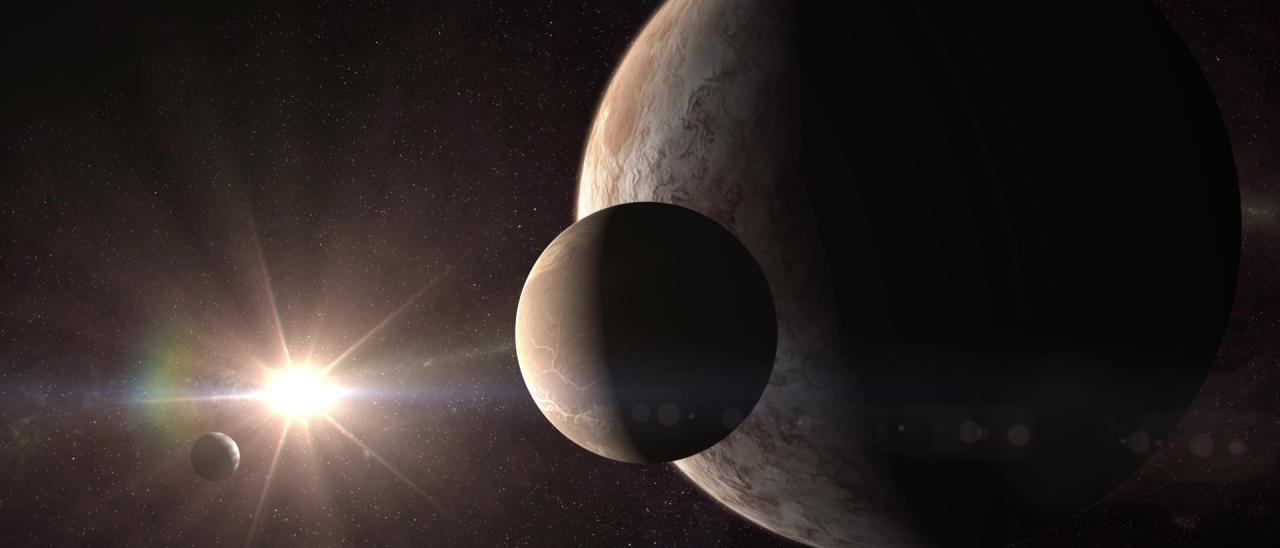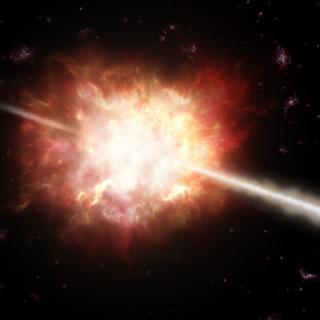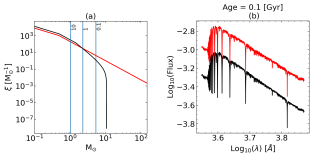20,000 observations from the Calar Alto telescope in Spain are made public, and have led to the discovery of 59 planets, some of them potentially habitable. The study, led by a consortium of Spanish and German institutions, has the prominent participation of the Instituto de Astrofísica de Canarias (IAC) and it is is published in the journal Astronomy & Astrophysics.
The CARMENES project has just published data from about 20,000 observations taken between 2016 and 2020 for a sample of 362 nearby cool stars. The project, which is financed with Spanish and German funds, uses the CARMENES instrument, an optical and infrared spectrograph, hosted at Calar Alto Observatory, which aims to find Earth-like exoplanets (rocky and temperate) located in the habitability zone of their star, that is, with the possibility of harbouring liquid water on their surface.
The paper published in Astronomy & Astrophysics is the 100th article of the CARMENES consortium, which shows how successful the project has been in providing information about Earth-like exoplanets and their stars."Since it came into operation, CARMENES has re-analysed 17 known planets and has discovered and confirmed 59 new planets in the vicinity of our Solar System, a dozen of which are potentially habitable" explains Ignasi Ribas. director of the Institut d’Estudis Espacials de Catalunya (IEEC) and first author of this recently published work.
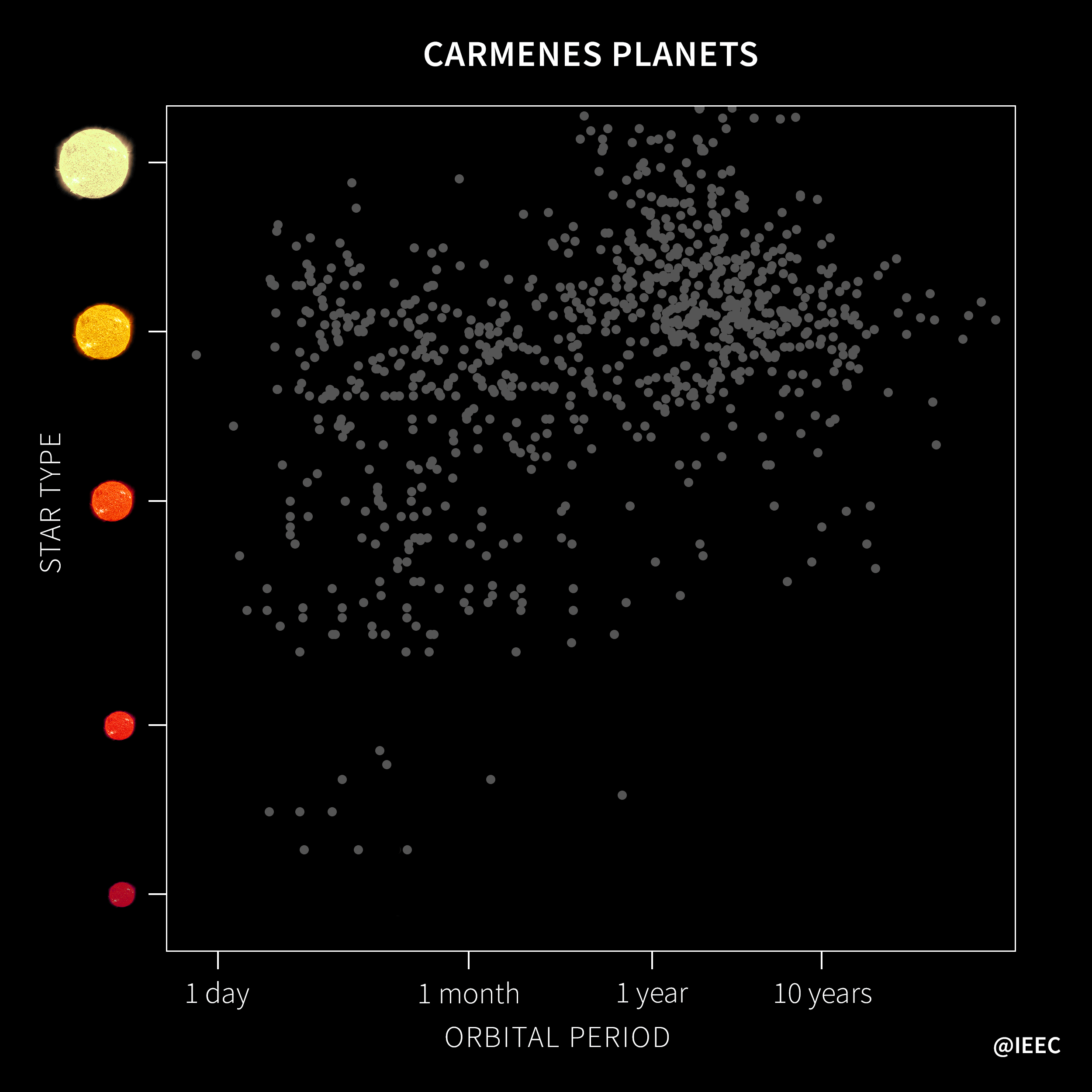
Importantly, CARMENES has observed almost half of all nearby small stars (a part of them can only be observed from the southern hemisphere) and has boosted the number of exoplanets we know about around nearby cool stars by doubling those detected. In addition, the spectra obtained also provide extremely valuable information about the atmospheres of the stars and their planets, among other features. It is to be hoped that, with the publication of this first large dataset, the research community will analyse it and will be able to further increase its scientific output. The CARMENES project will continue with its current series of observations until the end of 2023.
The IAC, a key institution
More than 200 scientists and engineers from 11 Spanish and German institutions are involved in the project, in which researchers from the IAC have a prominent role from the early stages, participating in the design and construction of several mechanical components of the instrument and, currently, in the scientific exploitation.Tthe IAC researchers have participated in the scientific coordination team, the highest decision-making body, and leaders of various working groups, such as the photometric monitoring, characterization of planetary atmospheres or follow-up of TESS candidates.
The IAC has participated in more than a hundred articles that have been published within the consortium and has led the discovery of many of these planets, some of which are among the least massive planets known and located in the habitable zone of the nearest stars to our Sun. The work carried out by IAC researchers has also allowed studying the composition and evaporation of the atmospheres of the so called "hot Jupiters", planets similar in size and mass to Jupiter, but orbiting very close to their star.
"Thanks to the searches for exoplanets with CARMENES, we have learned that most of the low-mass stars, which are the most abundant in the solar neighborhood, have planets, and that on average they have more than one planet per star," says Victor J.S. Béjar, IAC researcher and head of CARMENES at the IAC.
In addition to Víctor J. S. Béjar, current IAC members of the consortium include: Rafael Rebolo, Jonay González Hernández, Enric Pallé, Nicolas Lodieu, Eduardo L. Martín, Manuel Mallorquín, Jaume Orell, Giusseppe Morello, Felipe Murgas, Ilaria Carleo, Vera Passegger and Emilio Marfil.
Previously, they also participated: Pablo Redondo, Lisa Nortmann, Grzegorz Nowak, Rafael Luque, Carlos Cardona Guillén, Guillaume Gaisné, Lucía González Cuesta, Nuria Casasayas Barris, Guo Chen y Monika Stangret.
Article: I. Ribas et al. “The CARMENES search for exoplanets around M dwarfs. Guaranteed Time Observations Data Release 1 (2016-2020)”, Astronomy & Astrophysics, Feb. 2023. DOI: https://www.aanda.org/10.1051/0004-6361/202244879
Contact at the IAC:
Víctor J. S. Béjar, victor.bejar [at] iac.es (victor[dot]bejar[at]iac[dot]es)

